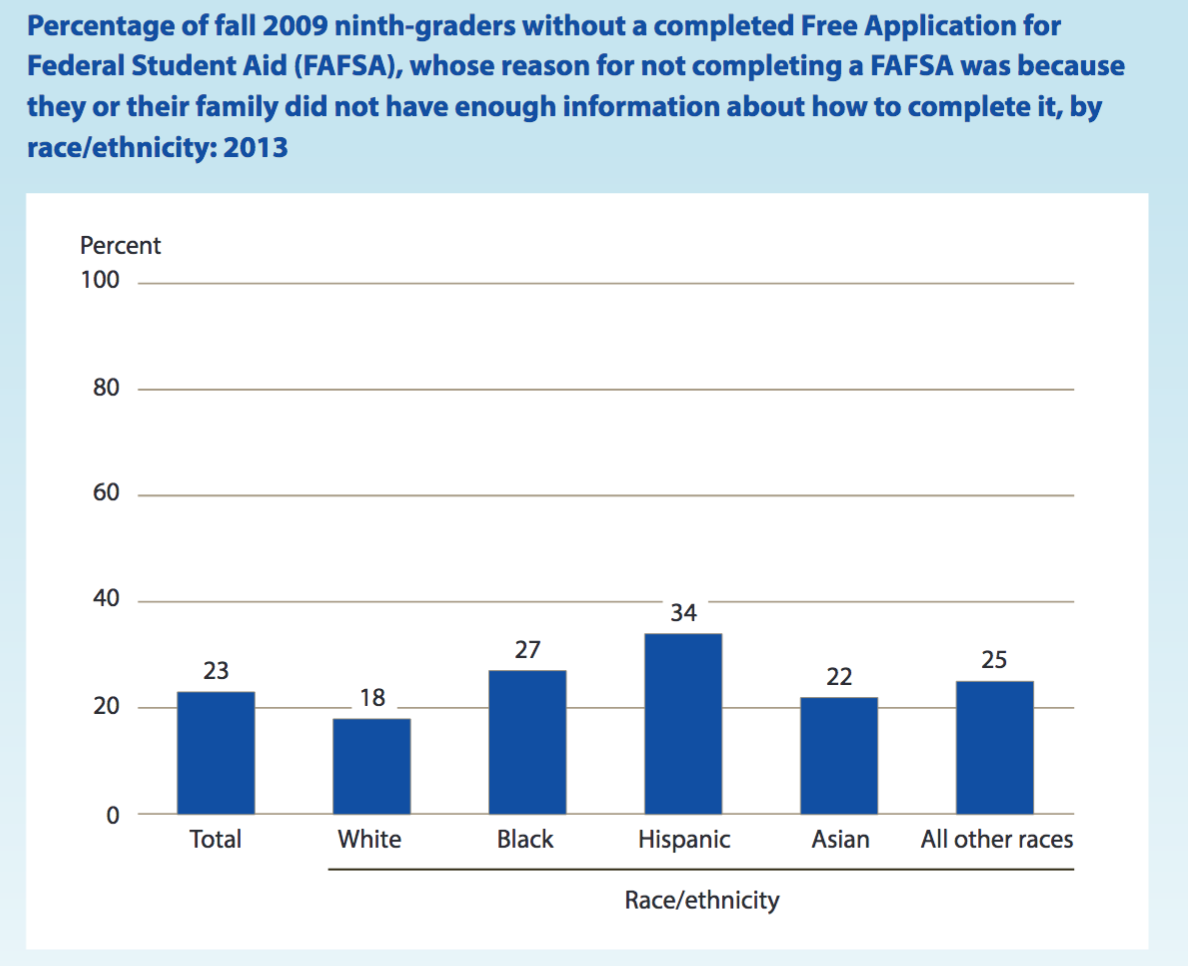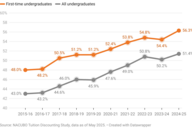You have /5 articles left.
Sign up for a free account or log in.
A new federal study considers why many students never fill out the Free Application for Federal Student Aid -- and thus make it impossible to receive federal aid and (in many cases) institutional aid.
The study, by the National Center for Education Statistics, surveyed a nationally representative sample of people who were in ninth grade in 2009 and who then went on to graduate from college. In the sample, 65 percent of students or their parents filled out the FAFSA. Of those who did not, the following reasons were given:
- 33 percent thought they or their family could afford school or college without financial aid.
- 32 percent thought they or their family may be ineligible or may not qualify for financial aid.
- 28 percent did not want to take on debt.
- 23 percent did not have enough information about how to complete a FAFSA.
- 22 percent did not plan to continue education after high school.
- 15 percent did not know they could complete a FAFSA.
- 9 percent thought the FAFSA forms were too much work or too time-consuming.
These results are likely to frustrate many educators. They would note that the FAFSA isn't just for loans, but for grants. And many would point to help available for filling out the form.
The study also shows that changing these views is particularly important to efforts to attract underrepresented minority students to higher education.





